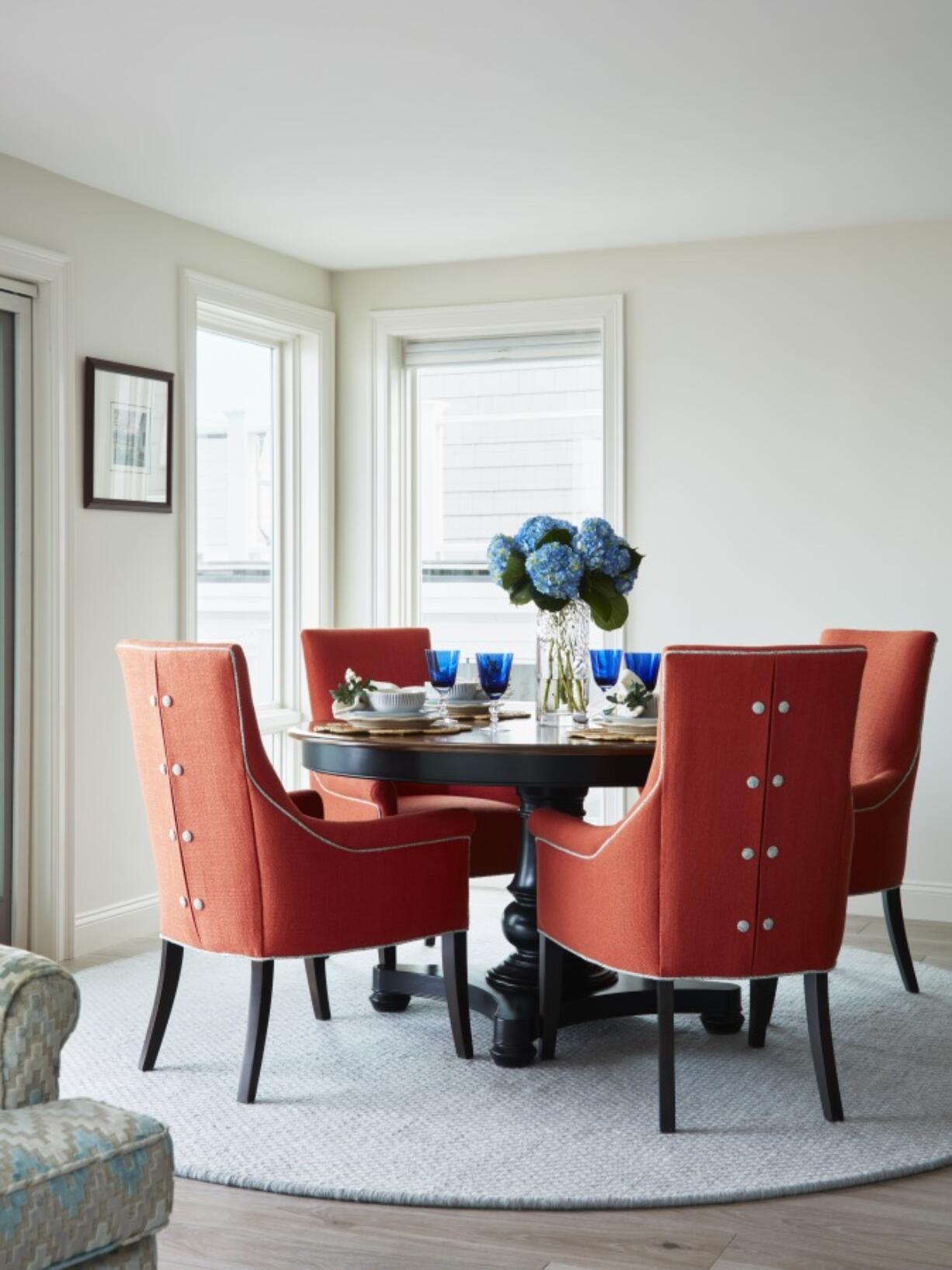In a world where speed and convenience have been the siren song to consumers, there’s a movement toward buying more mindfully, sustainably, “slowly.”
You’ve heard of slow fashion. Slow food. Slow travel. And when it comes to the home, “slow decorating.”
A reaction against rooms filled with mass-produced “fast furniture,” slow decorating embraces a more deliberate approach that prioritizes a personal connection to the stuff we live with. It might mean giving new life to heirloom or found pieces. Or buying new things that have the quality to last.
The journey of creating a space is as important as the destination.
New York City designer Gideon Mendelson thinks the movement echoes the Japanese philosophy of “ikigai,” which centers around finding meaning and purpose. Applied to interiors, it’s about creating spaces that promote all-around well-being.
“To me, good design makes room for living and doing. Decorating with meaningful pieces isn’t about chasing an aesthetic, but curating spaces that resonate with authenticity and personal stories,” he says.
“It’s not just about how it looks; it’s about how you want to live.”
And you don’t have to spend a lot, he says. He framed some inexpensive yet eye-catching vintage deli signs, adding a playful element to the Hamptons dining room of a family of five.
The trend toward “slower,” more thoughtful interior design, Mendelson thinks, lies in subtleties: “The cherished heirlooms, and the intimate connection between a space and its inhabitants.”
Tossing now turning
Fast furniture’s association with cheaper materials, excessive packaging and frequent replacement clashes with consumers’ growing interest in minimizing our lasting impact on the planet.
Now, we’re buying more mindfully, but we’re also having a lot of fun DIYing.
During the pandemic, slow assembly lines and stalled container ships meant a lot of brand-new homewares weren’t getting made or sent to market, so upcycling stuff we had or found became hobby, and often necessity.
If you could find a great credenza at a flea market or online reseller that just needed a little TLC, why not?
Not too long ago, decor trade shows would include a handful of studio labs offering reclaimed wood items and organic textiles. Today, at global fairs like Ambiente in Frankfurt, Salone in Milan and Paris’ Maison et Objet, hundreds of companies show new design made with environmental and social impact in mind. Fair trade manufacturing. Fast-growing renewables such as hemp, bamboo and cork. Cushions made of soy-based foam instead of petroleum-based foam. Recycled glass and metal accessories.
Mid 20- and 30-somethings are seen as drivers of the slow design trend. TikTok and Instagram feeds are full of refinish-and-reveal videos, and modest abodes full of found treasures.
Stephen Orr, editor in chief of Better Homes & Gardens, says he’s spent the past couple of years renovating a 1760s house on Cape Cod.
“The first year was during the pandemic, so antiques and flea markets were a godsend considering all the supply chain disruptions,” he says.
“But during that process, we came to the realization that pieces with a patina of age better celebrate the house’s long history anyway.”
He also added some new, modern pieces “so it doesn’t look like we should be dressed in period Colonial Williamsburg costumes.”
Shopping tips
Furniture for sitting, sleeping and eating is where you should spend more money on quality, says Jillian Hayward Schaible of Susan Hayward Interiors.
“We encourage clients to invest in pieces like sofas/sectionals, beds, dining tables and upholstered items, because you can really feel the difference when these items are well-made,” she says.
Peter Spalding of the designer furniture sourcing platform Daniel House Club notes that imitations of Chippendale and other legacy-style pieces — think cabinets and wingback chairs, for example — were common in the ’80s and early ’90s.
“Now, the imitations aren’t very valuable, but the originals remain highly sought after,” he says. “As you collect ‘slow furniture,’ buy the most authentic versions you can afford.”
Dan Mazzarini of BHDM Design and ARCHIVE echoes the advice.
“If you’re looking for a good investment, go straight to vintage. Things that have already stood the test of time often have another 50 years left in them! Side tables, desks, even cabinets are great pieces to look for,” he says.
Mendelson mentions a pair of vintage French plaster shell sconces in his Sagaponack, N.Y., home. He bought them 15 years ago “and they still feel fresh and relevant today.”
“I think a desire for one-of-a-kind and bespoke is at least starting a conversation about handmade,” he says. “Quality vs. quantity. Living with intention.”
Stores on board
Many retailers are getting seats on the slow train. West Elm, for instance, was early among home retailers in joining Fair Trade USA, which ensures that suppliers maintain good workplaces and wages, and support their communities.
The global reforestation project One Tree Planted gets part of every purchase from furniture brand Joybird. Herman Miller’s rePurpose program gets used furniture to nonprofit organizations. And Ikea has initiatives like moving to bio-based glue, and instituting a buy-back/re-sell program that saw 230,000 items given a new life in 2022.
For the past five years, the United Nations Refugee Agency’s MADE51 initiative has helped artisans partner with fashion and home accessories businesses worldwide to create sustainable, fairly traded goods.



